Running ad campaigns without an attribution model is like ordering food without knowing where it’s coming from.
Sure, something will get delivered to you eventually, but you won’t know whether you’ll like it, how long it will take, or who’s bringing it to you.
Without this information, you can’t adapt your strategy to make sure you get exactly what you want next time.
You get it. Attribution models are crucial.
You need them to effectively understand your customer journeys, track performance, and optimize your campaigns. Yet, according to a 2020 study by DemandLab, only 36% of marketers have an active and measurable attribution strategy.

This is why we’re outlining different types of attribution models and how to choose the right one for your advertising needs.
What is an Attribution Model?
First, a definition.
An attribution model is a system for tying conversions back to specific marketing channels, such as native website ads, email marketing, or sponsored social media posts.
Say you run a new product campaign that drives a lot of sales, you want to know which platform and strategies were responsible for its success. Your attribution model will tell you this.
Your attribution model uses analytics to weigh the value of each touchpoint and message along the consumer journey.
A customer, for example, might engage with an email newsletter and Facebook post, but only when they see a native ad targeted to their interests do they convert.
Knowing this, you can double down on native ad distribution, spend your budget more efficiently, and personalize your ads to meet customers on this channel.
As DemandLab reported, revenue attribution strategies help marketing leaders make better decisions, align marketing and sales, and increase the effectiveness of their campaigns.

What are the Different Types of Attribution Models?
There are several different types of attribution models, each with its own processes and benefits.
To choose the model that best fits your advertising strategies and goals, it’s important to understand the ins and outs of each.
First-Touch Attribution Model
A first-touch attribution model gives all the credit to your customer’s first touchpoint, even if they engaged with other channels after that.
CallRail does a good job of visualizing these attribution models:

(Source: CallRail)
It attributes their revenue to the ad that got them in the door, not necessarily the one they saw right before making a purchase. First-touch attribution models are great for optimizing strategies that spread awareness and engage new customers.
Take insurance organization AIG Israel, for instance. The company worked with Taboola to spread brand awareness through a native video ad campaign.
Out of five different marketing channels, AIG Israel could see that 50% of people who made a purchase after viewing the campaign started their buyer journey with Taboola.
The video ads also reached 400,000 people and increased purchase intent by 30%.

Last-Touch Attribution Model
A last-touch attribution model places all the value on the last touchpoint the customer engages with before converting, even if they engaged with many touchpoints before that.
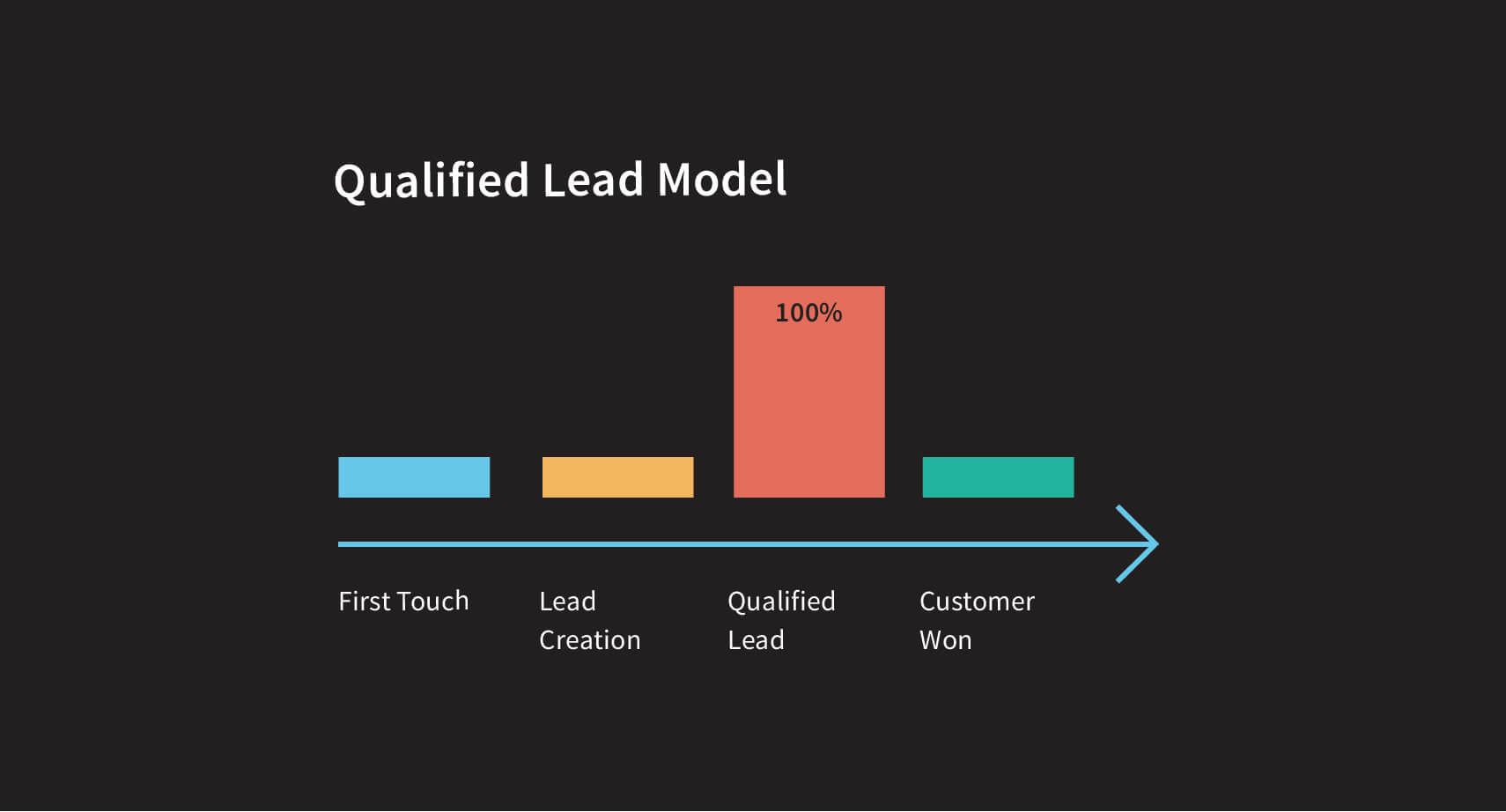
(Source: CallRail)
A customer might see your Facebook ad, for example, download your free asset, engage with a native ad on an article they’re reading, and then make a purchase.
Which touchpoint gets the credit?
In a last-touch attribution model, the native website ad does, as it was the last message the customer saw before completing the buyer journey.
Linear Attribution Model
A linear attribution model places equal value on each touchpoint the customer experiences along their path to purchase.
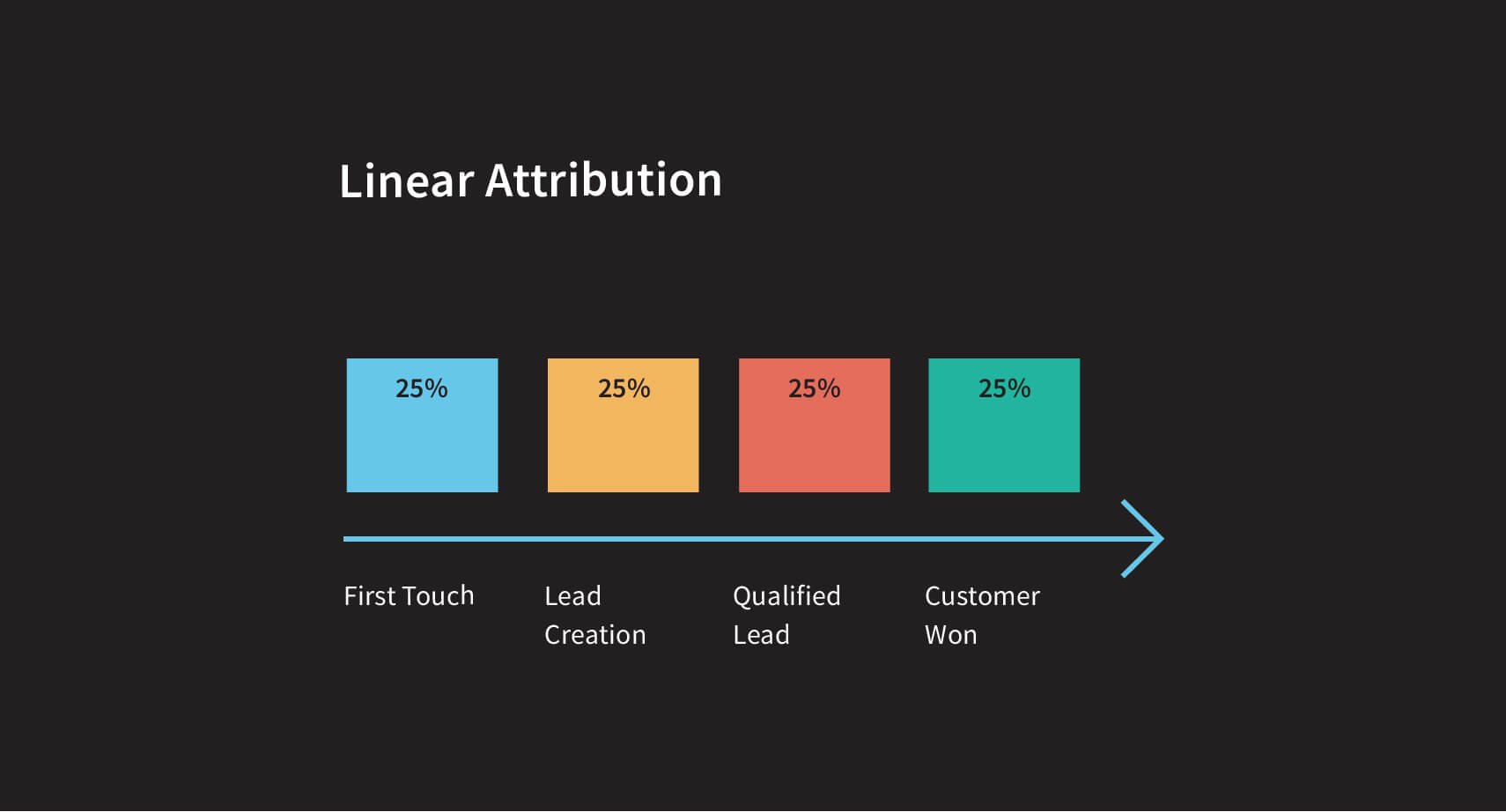
(Source: CallRail)
So, in the above example, the Facebook ad, the downloadable asset, and the native ad get the same amount of credit for driving the customer to buy.
It may seem tough to parse out which channels are pulling their weight with this model, but the more you use the linear model, the more data you collect, and the more you see which touchpoints continuously do their part across campaigns — and where in the funnel they perform best.
Position-Based Attribution Model
A position-based attribution model, or ‘U’-shaped attribution model, credits the first and last touchpoints — each receive the most credit for driving a conversion.
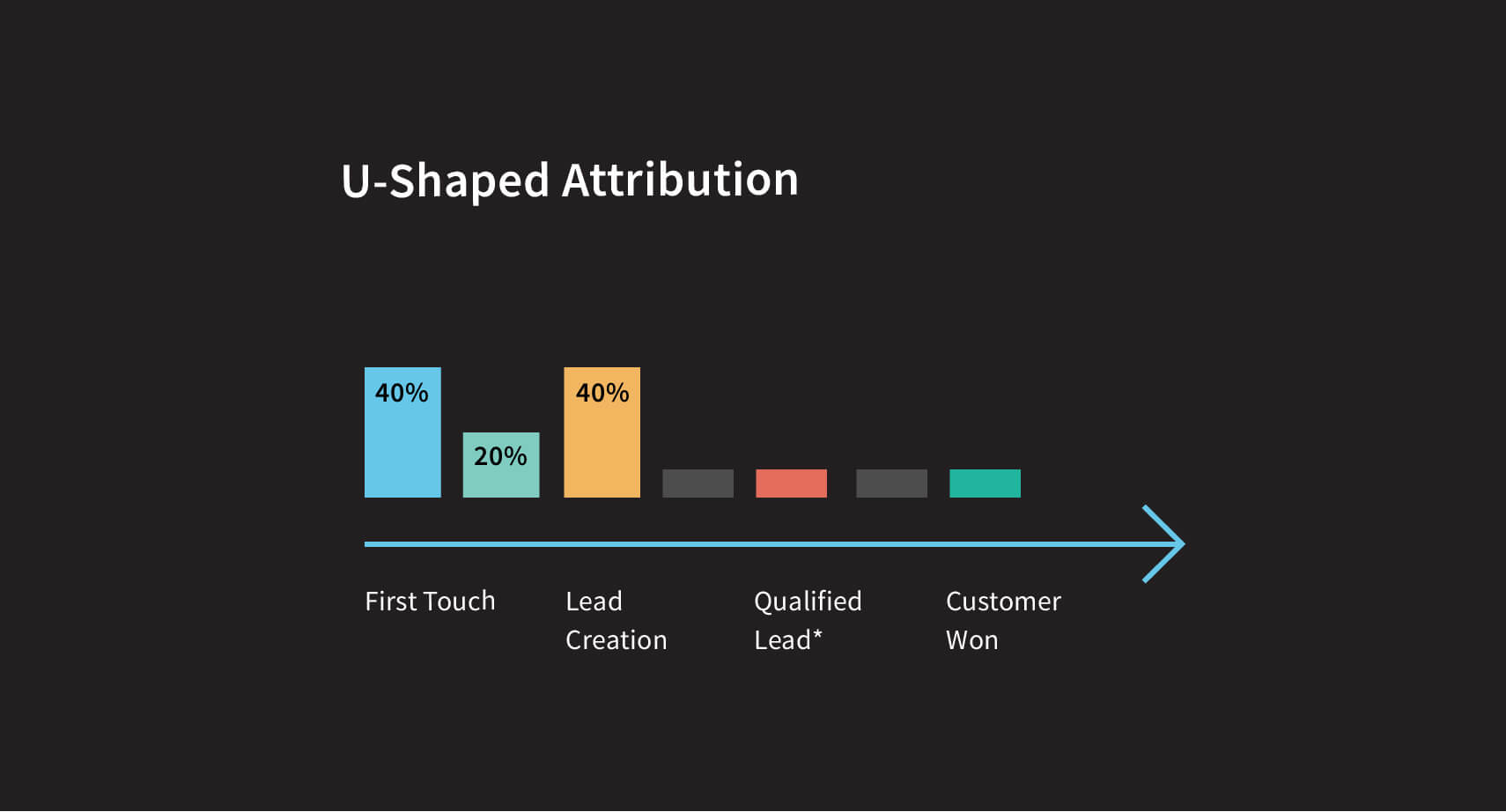
(Source: CallRail)
Meanwhile, the touchpoints in between receive a percentage of credit, based on their position along the customer journey. The closer they are to one of those endpoints, the more weight they carry.
Say a customer sees a search ad, signs up for an email newsletter and then converts after seeing an Instagram ad; the search ad and Instagram ad each get 40% credit for the conversion, while the email newsletter receives 20%.
View-Through Attribution Model
The view-through attribution model is similar to the first-touch attribution model in that it places value on that first customer event.
The difference here is that the event is just a view or impression — not a click or engagement.
A customer might, for example, see a website ad, not click on it, and later search for the website to return and make a purchase — this is what a view-through attribution model tracks.
Mattress company OTTY, for example, launched a sponsored content campaign to increase awareness and traffic, and ultimately drive conversions.
The business used view-through attribution to track an average 7.8 times return on ad spend each month and stronger cost-per-acquisition.

Time Decay Attribution Model
A time decay attribution model places more value on the touchpoints closest to the conversion.
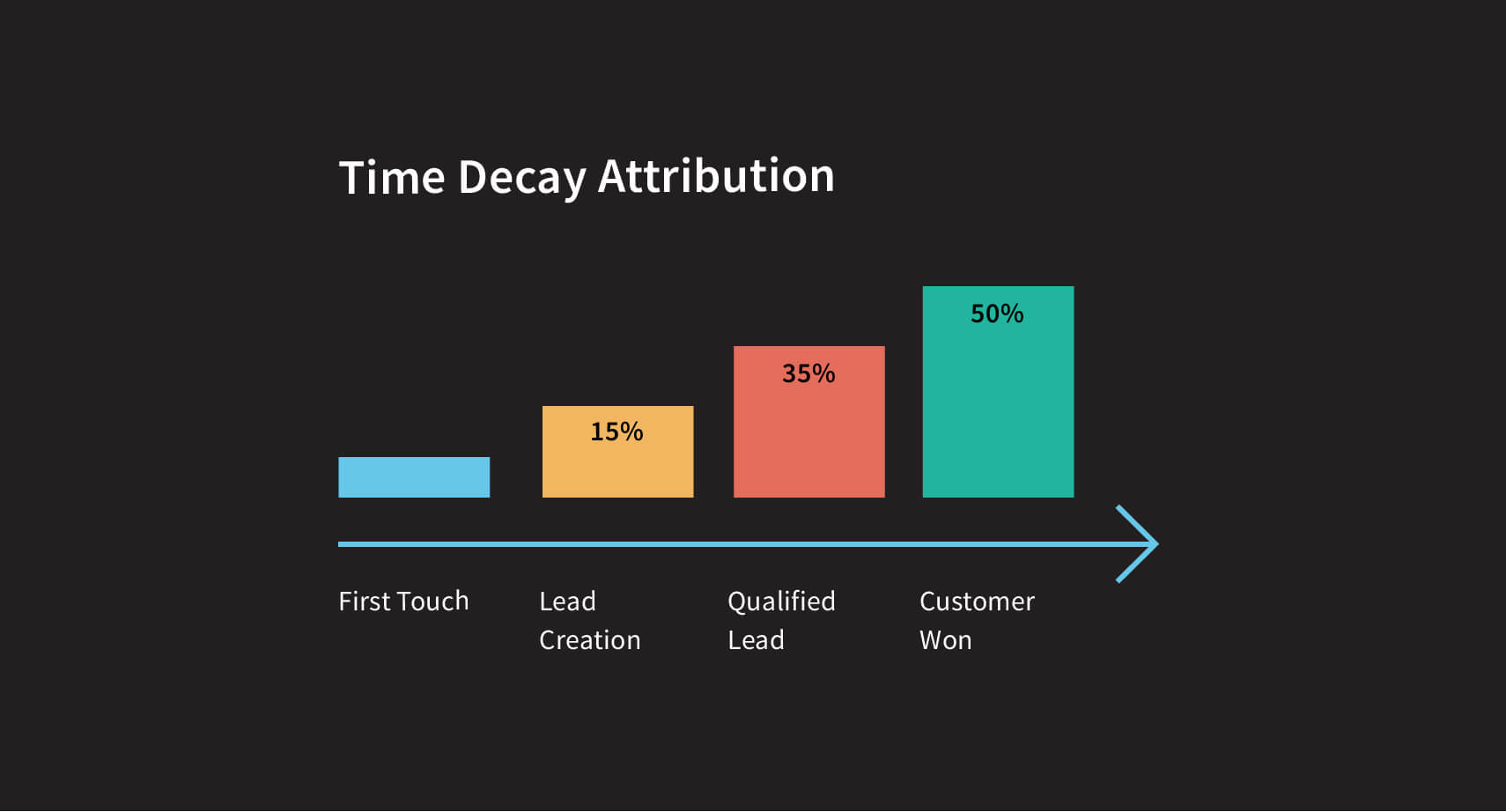
(Source: CallRail)
The further along the customer journey a touchpoint is, the more credit it receives. This model is ideal for conversion-oriented campaigns.
It says, ‘Yes, impressions and clicks are important, but what we care most about are those final actions at the top of the funnel.’
Data-Based Attribution Model
A data-based attribution model, or ‘W’-shaped attribution model, places the same value on the first touchpoint, the last touchpoint, and the middle touchpoint.
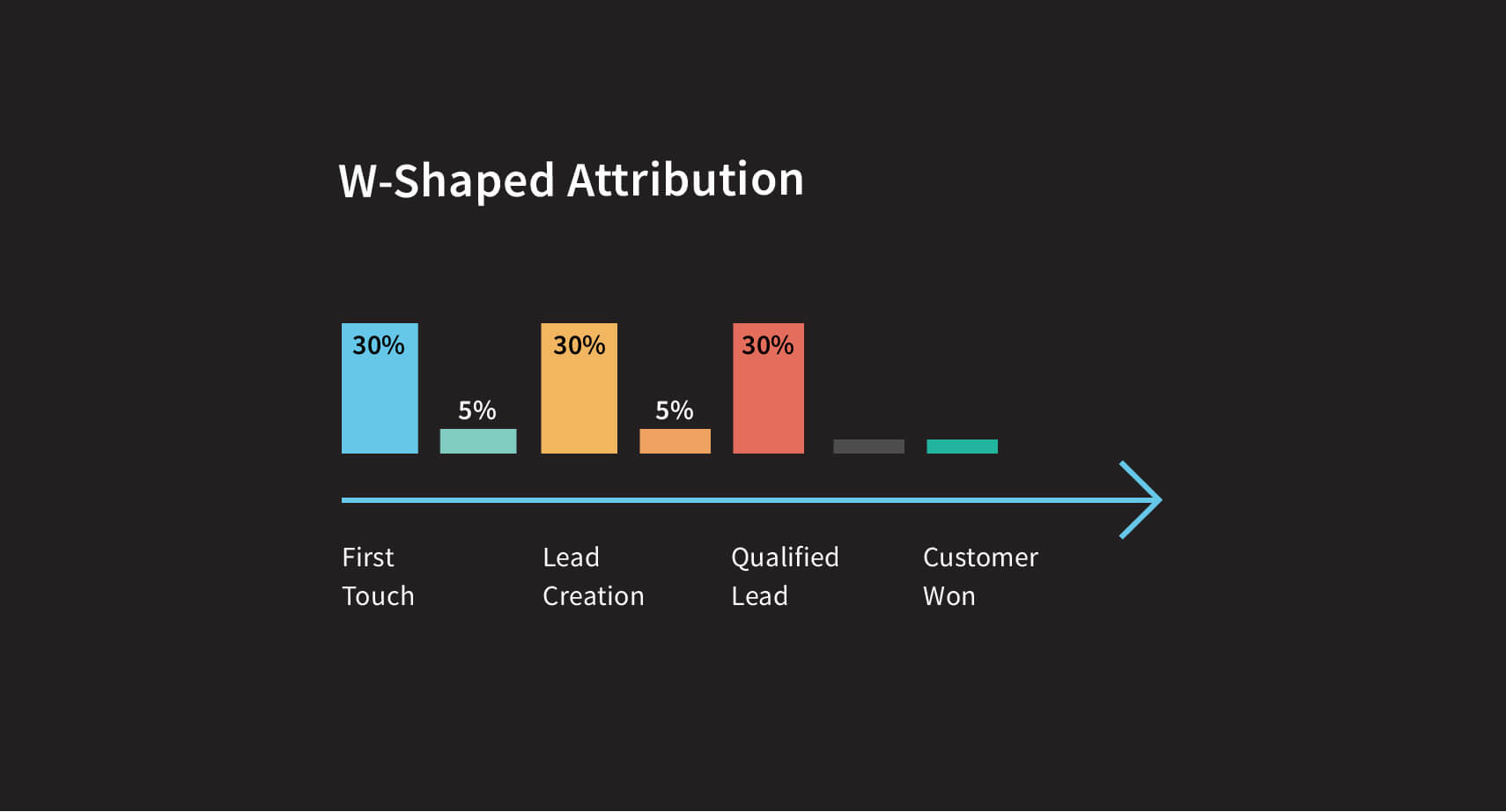
(Source: CallRail)
Each of these points receive 30% of the attribution. The other 10% is usually divided among any added touchpoints along the funnel.
A customer might, for example, see a social media ad, email ad, website ad, search ad, and native ad. The social media, website, and native ads each get 30% credit. The email and search ads each get 5%.
Attribution Modeling Done Right
Attribution modeling is a vital part of any advertising campaign. Even if your ads bring in big numbers, you must know which channels were responsible for those numbers. If you don’t track this you’ll have trouble replicating your success and optimizing your strategies.
The good news is you have plenty of attribution models to choose from. Select the ones that best match your customer journeys and KPIs, so you can keep driving — and tracking — those conversions.